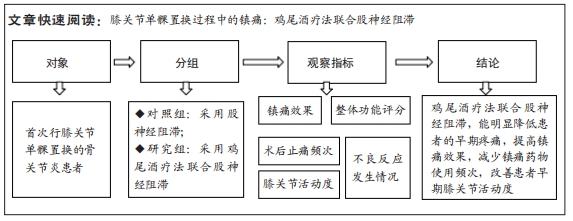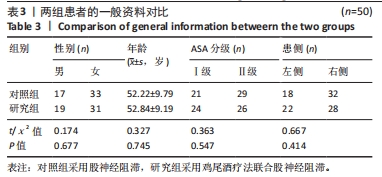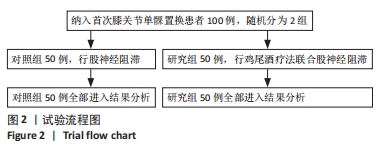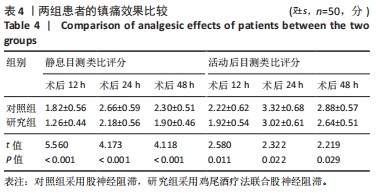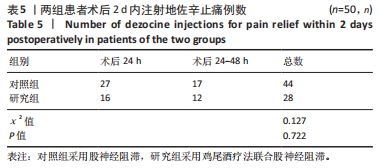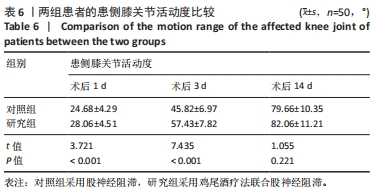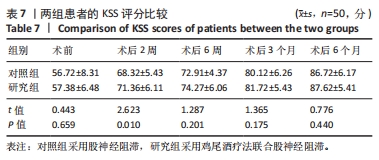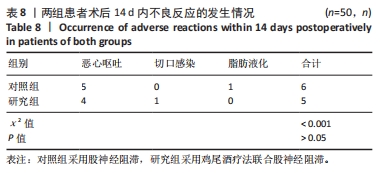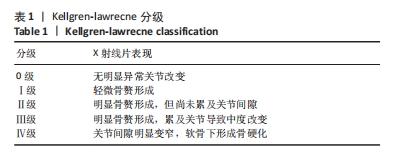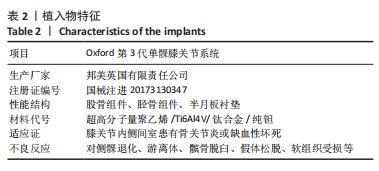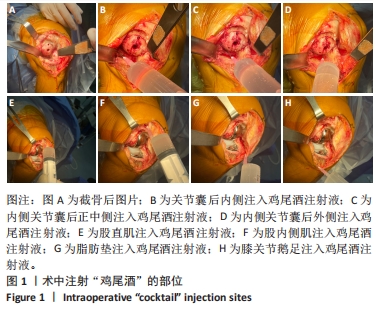[1] 王波,余楠生.膝骨关节炎阶梯治疗专家共识(2018年版)[J].中华关节外科杂志,2019,13(1):124-130.
[2] JANG S, LEE K, JU JH. Recent Updates of Diagnosis, Pathophysiology, and Treatment on Osteoarthritis of the Knee. Int J Mol Sci. 2021;22(5):2619.
[3] SHARMA L. Osteoarthritis of the Knee. N Engl J Med. 2021;384(1):51-59.
[4] MICHAEL JW, SCHLÜTER-BRUST KU, EYSEL P. The epidemiology, etiology, diagnosis, and treatment of osteoarthritis of the knee. Dtsch Arztebl Int. 2010;107(9):152-162. Erratum in: Dtsch Arztebl Int. 2010;107(16):294.
[5] GAN Y, ZHUANG J, JIANG W, et al. Application of Personalized Navigation Templates to Oxford Single Condylar Replacement in a Chinese Population. J Knee Surg. 2021;34(11):1155-1161.
[6] JOHAL S, NAKANO N, BAXTER M, et al. Unicompartmental Knee Arthroplasty: The Past, Current Controversies, and Future Perspectives. J Knee Surg. 2018;31(10):992-998.
[7] CRAWFORD DA, BEREND KR, THIENPONT E. Unicompartmental Knee Arthroplasty: US and Global Perspectives. Orthop Clin North Am. 2020; 51(2):147-159.
[8] MURRAY DW, PARKINSON RW. Usage of unicompartmental knee arthroplasty. Bone Joint J. 2018;100-B(4):432-435.
[9] WANG R, ZHAO J, GUO X, et al. The Effects of Periarticular Injection Cocktail in Postoperative Analgesia after Bilateral Unicompartmental Knee Arthroplasty. Comput Math Methods Med. 2022;2022:9289904.
[10] KELLGREN JH, LAWRENCE JS. Radiological assessment of osteo-arthrosis. Ann Rheum Dis. 1957;16(4):494-502.
[11] EWALD FC. The Knee Society total knee arthroplasty roentgenographic evaluation and scoring system. Clin Orthop Relat Res. 1989;(248):9-12.
[12] 戴雪松,宓云峰,熊炎,等.活动与固定平台的单髁假体置换治疗膝关节内侧间室骨关节炎[J].中华骨科杂志,2015,35(7):691-698.
[13] FABRE-AUBRESPY M, OLLIVIER M, PESENTI S, et al. Unicompartmental Knee Arthroplasty in Patients Older Than 75 Results in Better Clinical Outcomes and Similar Survivorship Compared to Total Knee Arthroplasty. A Matched Controlled Study. J Arthroplasty. 2016;31(12): 2668-2671.
[14] DALURY DF, FISHER DA, ADAMS MJ, et al. Unicompartmental knee arthroplasty compares favorably to total knee arthroplasty in the same patient. Orthopedics. 2009;32(4):orthosupersite.com/view.asp? rID=38057.
[15] MITTAL A, MESHRAM P, KIM WH, et al. Unicompartmental knee arthroplasty, an enigma, and the ten enigmas of medial UKA. J Orthop Traumatol. 2020;21(1):15.
[16] MEMTSOUDIS SG, COZOWICZ C, BEKERIS J, et al. Peripheral nerve block anesthesia/analgesia for patients undergoing primary hip and knee arthroplasty: recommendations from the International Consensus on Anesthesia-Related Outcomes after Surgery (ICAROS) group based on a systematic review and meta-analysis of current literature. Reg Anesth Pain Med. 2021;46(11):971-985.
[17] 钟庆,翁艳,刘迁,等.序贯降阶梯式与常规持续股神经阻滞在全膝关节置换术后镇痛中的效果比较[J].临床麻醉学杂志,2019, 35(9):837-841.
[18] MIHALKO WM, URISH K, HAIDER H. Optimal designs and surgical technique for hip and knee joint replacement: The best is yet to come! J Orthop Res. 2021;39(9):1851-1859.
[19] 黄强,曾羿,胡钦胜,等.单髁关节置换术与全膝关节置换术治疗膝关节内侧间室重度骨关节炎的比较研究[J].中国修复重建外科杂志,2021,35(9):1125-1132.
[20] HOHMANN E. Editorial Commentary: Femoral Nerve Block: Don’t Kill the Motor Branch. Arthroscopy. 2020;36(7):1981-1982.
[21] LIN DY, MORRISON C, BROWN B, et al. Pericapsular nerve group (PENG) block provides improved short-term analgesia compared with the femoral nerve block in hip fracture surgery: a single-center double-blinded randomized comparative trial. Reg Anesth Pain Med. 2021;46(5):398-403.
[22] BAKER MD, GULLETT JP. Ultrasound-Guided Femoral Nerve Blocks. Pediatr Emerg Care. 2015;31(12):864-868; quiz 869-871.
[23] PELT CE, ANDERSON AW, ANDERSON MB, et al. Postoperative falls after total knee arthroplasty in patients with a femoral nerve catheter: can we reduce the incidence? J Arthroplasty. 2014;29(6):1154-1157.
[24] WASSERSTEIN D, FARLINGER C, BRULL R, et al. Advanced age, obesity and continuous femoral nerve blockade are independent risk factors for inpatient falls after primary total knee arthroplasty. J Arthroplasty. 2013;28(7):1121-1124.
[25] 李金洁,王云芸,赵英,等.鸡尾酒疗法对老年全膝关节置换术后镇痛的影响[J].中国老年学杂志,2016,36(15):3769-3770.
[26] 张念军,陈茹.全膝关节置换过程中鸡尾酒疗法联合股神经阻滞的镇痛效果[J].中国组织工程研究,2021,25(6):866-872.
[27] GAUTAM VK, KUMAR A, AGARWAL M, et al. Comparative evaluation of periarticular infiltration of two cocktail regimens for analgesia in post-operative patients of total knee replacement. J Arthrosc Jt Surg. 2019; 6(2):98-102.
[28] PENG D, LIU Q, CAO X, et al. Evaluation of Light Specific Gravity Ropivacaine Combined with Sufentanil in Hip Arthroplasty at An Advanced Age.J Adv Med Sci. 2021;4(1):19-22.
[29] IKEUCHI M, KAMIMOTO Y, IZUMI M, et al. Effects of dexamethasone on local infiltration analgesia in total knee arthroplasty: a randomized controlled trial. Knee Surg Sports Traumatol Arthrosc. 2014;22(7): 1638-1643.
[30] MCCORMACK PL. Tranexamic acid: a review of its use in the treatment of hyperfibrinolysis. Drugs. 2012;72(5):585-617.
[31] KESICI S, DEMIRCI M, KESICI U. Antibacterial effects of lidocaine and adrenaline. Int Wound J. 2019;16(5):1190-1194.
[32] MIJOVSKI G, PODBREGAR M, KŠELA J, et al. Effectiveness of wound infusion of 0.2% ropivacaine by patient control analgesia pump after minithoracotomy aortic valve replacement: a randomized, double-blind, placebo-controlled trial. BMC Anesthesiol. 2020;20(1):172.
[33] ZHANG CL, FENG H, LI L, et al. Globular CTRP3 promotes mitochondrial biogenesis in cardiomyocytes through AMPK/PGC-1α pathway. Biochim Biophys Acta Gen Subj. 2017;1861(1 Pt A):3085-3094.
[34] SEO SS, KIM OG, SEO JH, et al. Comparison of the Effect of Continuous Femoral Nerve Block and Adductor Canal Block after Primary Total Knee Arthroplasty. Clin Orthop Surg. 2017;9(3):303-309.
[35] ZHENG T, XIONG J, SHI X, et al. Cocktail Therapy towards High Temperature/High Voltage Lithium Metal Battery via Solvation Sheath Structure Tuning. Energy Storage Materials. 2021; 38(June 2021): 599-608.
[36] GAFFNEY CJ, PELT CE, GILILLAND JM, et al. Perioperative Pain Management in Hip and Knee Arthroplasty. Orthop Clin North Am. 2017;48(4):407-419.
[37] LIN J, YANG X, XIE Y, et al. Unleashing The Potential Of Multiple-Targeted Therapies In Hepatobiliary Cancers: Two Cases, Cocktail Therapy With Nine Molecular Targeted Agents And Long-Lasting Survival. Onco Targets Ther. 2019;12:9941-9945. |
